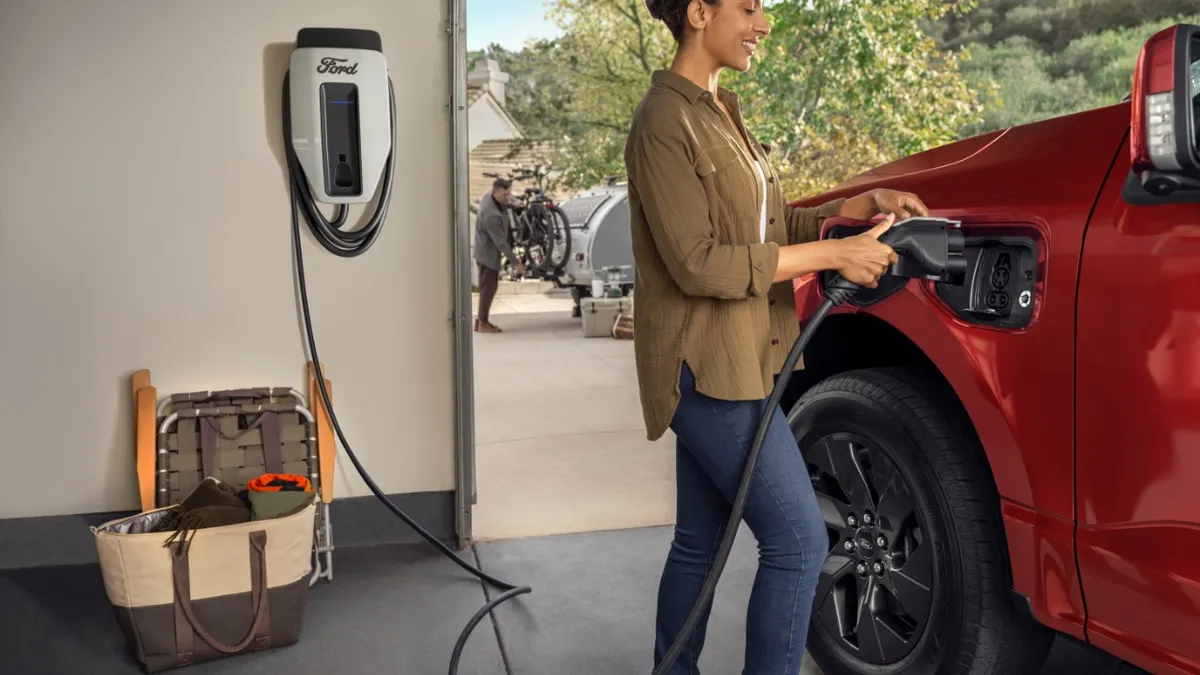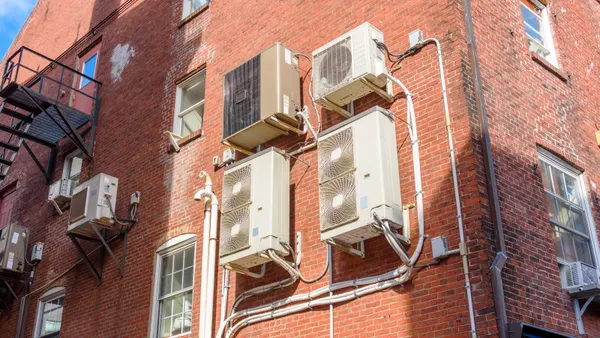Dive Brief:
- Sunrun and Baltimore Gas & Electric have launched a small vehicle-to-home grid support program in Maryland utilizing Ford F-150 Lightning trucks to demonstrate how bidirectional electric vehicle charging can ease grid stress and add value for customers. The program will deliver power to owners’ homes during peak summer demand to support Maryland’s power grid, the companies said Wednesday.
- The program is the first operational bidirectional electric vehicle power plant in the United States that uses “a cohort” of customer vehicles, the companies said in a press release.
- The vehicle-to-home effort is “a significant proof of concept — no other market player has done this — and the goal is to expand these programs all around the country,” Sunrun CEO Mary Powell said in a statement.
Dive Insight:
Based on insights gained, Sunrun and BGE say they “plan to explore expanding the program, offering incentives for existing F-150 Lightning owners to adopt bidirectional charging and developing direct, vehicle-to-grid capabilities so that energy from electric vehicles can be shared throughout a community.”
The vehicle-to-home charging program is funded by a grant from the U.S. Department of Energy to BGE, for creation of an EV virtual power plant, the companies said. The program will run from June 1 to September 30, with “dispatch windows” from 5 p.m. to 9 p.m. on weekdays.
“We know that the power stored in electric vehicles will be essential in our state’s effort to achieve its bold net-zero emissions goals,” BGE Vice President of Regulatory Policy and Strategy Mark Case said in a statement. The utility wants to understand how vehicle-to-grid programs “will support increasing grid efficiency and reliability with distributed energy resources, while providing a valuable new benefit to customers.”
The program kicks off with three Sunrun customers in BGE’s service territory, each of whom own an F-150 and a Ford Charge Station Pro and Home Integration System. Customers will receive payments based on the amount of energy shared, which Sunrun estimates to be $800 over the four months of the program.
“This exciting partnership lays the foundation for the power grid of the future where electric vehicle owners can contribute to grid resiliency and utility price stability for everyone,” Powell said. “The summer heat can be especially stressful on our power grid, which is why proving the use of stored energy in electric vehicles for capacity is so important.”
Utilities are beginning to stand up bidirectional charging programs and pilots, though they are starting small.
Xcel Energy and Fermata Energy in May announced a small but “transformational” vehicle-to-everything bidirectional electric vehicle charging pilot to explore reducing the upfront and operational costs of EV adoption. The pilot will utilize only four chargers and a half dozen vehicles, but Xcel officials said they hope to broadly apply any findings about how EVs can be efficiently integrated into its electric grid.















